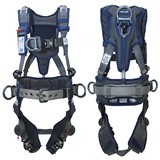Importance of Safety and Compliance in Metal Detection
Metal detection systems play a crucial role in various industries, including food processing, pharmaceuticals, mining, and security. These systems are designed to detect and remove potentially hazardous metal contaminants from products and materials, ensuring the safety of consumers, employees, and the overall production process. Compliance with industry standards and regulations is paramount to guarantee the effectiveness and reliability of food metal detectors in Sydney.
1. Meeting Quality and Safety Standards with Metal Detectors
Metal detection systems play a crucial role in ensuring product quality and safety across various industries. Manufacturers and regulatory bodies alike emphasize the importance of meeting stringent standards to prevent the presence of contaminants in products. This section will delve into key aspects of meeting quality and safety standards with food metal detectors, focusing on Hazard Analysis and Critical Control Points (HACCP), compliance with FDA regulations, and other industry standards such as ISO and CE marking.
-
Understanding HACCP (Hazard Analysis and Critical Control Points)
HACCP is a systematic preventive approach to food safety, pharmaceuticals, and other industries where metal contamination can pose severe risks to consumers and end-users.
The process involves identifying potential hazards in the production process, determining critical control points, and implementing measures to mitigate or eliminate risks. Metal detectors play a pivotal role in HACCP plans, serving as critical control points to detect and remove metal contaminants from the production line. By incorporating HACCP principles, manufacturers can minimize the likelihood of metal contamination incidents, protecting both their customers and brand reputation.
-
Other Industry Standards for Metal Detection Systems
ISO Standards
The International Organization for Standardization (ISO) develops and publishes international standards covering a wide range of industries and technologies.ISO 22000,specifically, addresses food safety management systems, including the use of metal detection equipment to control contamination risks. Adhering to ISO standards ensures that manufacturers maintain a robust and reliable metal detection process, bolstering their commitment to producing safe and high-quality products.
CE Marking The CE marking is mandatory for certain products sold in the European Economic Area (EEA) and indicates compliance with relevant EU health, safety, and environmental protection directives. Metal detection equipment manufacturers must meet specific requirements and tests to affix the CE mark to their products, demonstrating conformity with applicable regulations. For businesses seeking to export their products to EEA countries, obtaining CE marking for their metal detectors is crucial for market access and consumer trust.
2. Providing Operator Training for Safe Handling of Metal Detection Equipment
A. Importance of Proper Operator Training:
Ensuring the safety and efficiency of metal detection systems hinges on the knowledge and competence of the operators handling them. Proper training is crucial to minimize risks and maximize the benefits of these devices in various industries. A well-trained operator can effectively detect contaminants and foreign objects, preventing potential hazards such as product contamination, equipment damage, or production downtime. Operator training also contributes to the overall compliance of the facility with safety regulations, quality standards, and industry best practices.
B. Essential Training Components:
- Equipment Operation:
Familiarization with the metal detection system's user interface, controls, and functionalities is the foundation of effective training. Operators should understand how to operate the equipment correctly and efficiently. Training should cover the proper setup and calibration of the metal detector, adjusting sensitivity levels, and configuring reject mechanisms as per the specific application requirements. - Maintenance Procedures:
Regular maintenance of metal detection equipment is vital for sustained performance and longevity. Operators must be well-versed in routine maintenance tasks to keep the system in optimal condition.
Maintenance training should include procedures for cleaning, sanitation, and proper handling of the equipment to prevent contamination risks. In-depth understanding of preventive maintenance schedules and the identification of common issues is essential to troubleshoot and resolve problems promptly. - Emergency Protocols:
Rapid and accurate responses to emergencies can prevent serious consequences. Operators should receive comprehensive training on handling critical situations effectively.
Emergency protocols may include dealing with false alarms, system malfunctions, power outages, or contaminated product detection. Operators should also be aware of proper shutdown procedures and how to communicate with relevant personnel during emergencies.
C. Periodic Training and Refresher Courses:
Operator training is not a one-time event; it should be an ongoing process to ensure operators stay updated with the latest best practices and safety measures.
Periodic refresher courses help reinforce knowledge, address potential skill gaps, and provide operators with opportunities to learn about new features or updates in the metal detection system. Incorporating new industry guidelines or regulations into the training curriculum helps maintain compliance with evolving safety standards.
3. Placing Metal Detectors Strategically to Minimize Workplace Hazards
Placing metal detectors strategically within industrial settings is crucial to ensure workplace safety and compliance with quality standards. By strategically positioning these detectors, businesses can effectively identify and mitigate potential hazards related to metal contamination. This section outlines the key considerations and expert recommendations for optimal placement of metal detectors in a formal and informative manner.
A. Conducting a Risk Assessment
Before implementing metal detection systems, conduct a comprehensive risk assessment of the facility. Identify areas with the highest risk of metal contamination, such as processing points, conveyor belts, or raw material storage. Consider potential hazards posed by the presence of metals in the production process, including equipment damage, product contamination, and safety risks to employees.
B. Identifying Critical Control Points (CCPs)
Determine critical control points in the production process where metal detection is essential to ensure product integrity and safety. Focus on locations where metals could be introduced, transferred, or retained within the production line. Implement metal detectors at these CCPs to enable real-time identification and removal of contaminated products.
C. Integration with Existing Production Lines
Evaluate the layout of the existing production lines to identify suitable integration points for metal detectors. Collaborate with engineering and production teams to seamlessly incorporate metal detection equipment into the workflow. Ensure minimal disruption to the production process during the installation and integration phases.
D. Avoiding Interference and False Alarms
Choose appropriate food metal detector technologies that are less susceptible to interference from external sources. Consider the proximity of other electronic equipment or machinery that might interfere with metal detector performance. Regularly calibrate and maintain the detectors to reduce false alarms and improve overall efficiency.
4. Ensuring Radiation Safety in X-ray-based Metal Detection Systems
A. Understanding X-ray Technology in Metal Detection
X-ray technology's application in metal detection systems provides efficient and non-intrusive inspection capabilities. X-rays are electromagnetic waves with higher energy levels than visible light, allowing them to penetrate various materials. In metal detection, X-rays are used to identify and visualize metal contaminants within products or packages.
B. Minimizing Radiation Exposure
Employing appropriate safety measures is crucial to minimize radiation exposure to operators and the surrounding environment. Use of shielding materials to contain X-ray emissions and prevent dispersion outside the inspection zone. Regular maintenance and calibration of X-ray equipment to ensure optimal performance and safety.
C. Compliance with Regulatory Limits
Government and international bodies set specific regulations and limits on X-ray radiation emissions to protect public health and safety. Manufacturers of X-ray-based metal detection systems must adhere to these standards and undergo rigorous testing and certification. Compliance ensures that radiation levels remain within safe thresholds during operation.
D. Proper Labeling and Signage
Clearly visible and standardized warning labels must be affixed to X-ray equipment, indicating the presence of ionizing radiation. Signage should include safety instructions and contact information for trained personnel or authorities. These labels serve as essential reminders for operators and visitors to exercise caution and follow safety protocols.
5. Considering Security Aspects of Walk-Through Metal Detectors
A. Applications of Walk-Through Metal Detectors
Walk-through metal detectors serve as essential security tools in various settings, enhancing safety and detecting concealed metal objects. They find extensive use in:
- Transportation Hubs: Airports, train stations, and bus terminals employ walk-through metal detectors to screen passengers and prevent prohibited items from being brought onboard.
- Public Events: Major events, such as concerts, sports games, and conferences, utilize these detectors to ensure the safety of attendees and maintain a secure environment.
- Government Buildings: Important government facilities, courthouses, and legislative centers often deploy walk-through metal detectors to control access and protect against potential threats.
- Educational Institutions: Schools and universities use metal detectors as a precautionary measure to prevent unauthorized weapons or dangerous items from entering the premises.
- Corporate Offices: Some high-security corporate offices and headquarters implement these systems to safeguard confidential information and protect employees and visitors.
- Correctional Facilities: Prisons and detention centers use walk-through metal detectors to prevent contraband from being smuggled inside.
B. Balancing Security and Privacy Concerns
As walk-through metal detectors play a crucial role in security, it is equally important to address privacy concerns and strike a balance between safety and personal privacy:
- Non-Intrusive Technology: Modern walk-through metal detectors are designed to detect metallic objects without revealing specific personal details, respecting the privacy of individuals passing through.
- Compliance with Privacy Laws: Implementers of these systems must adhere to relevant privacy laws and regulations to ensure the responsible and lawful use of the collected data.
- Transparent Communication: Clear signage and communication should be displayed, informing individuals about the presence of metal detectors and the purpose of their usage.
- Minimization of Data: Where applicable, data retention should be minimized, and stored data should be kept secure, accessible only to authorized personnel for security purposes.
C. Best Practices for Usage
To maximize the effectiveness of walk-through metal detectors and ensure a smooth and efficient screening process, the following best practices should be observed:
- Optimal Placement: Position the metal detectors at strategic entry points, considering the flow of foot traffic and potential bottlenecks to maintain a steady and organized screening process.
- Adequate Staffing: Ensure there are enough trained personnel to operate the metal detectors and handle any necessary follow-up procedures, such as secondary screenings or bag checks.
- Regular Maintenance: Conduct routine maintenance and calibration of the detectors to guarantee accurate readings and reduce the occurrence of false alarms.
- Integration with Access Control: Integrate metal detectors with access control systems to prevent unauthorized entry and maintain a controlled and secure environment.
- Ongoing Training: Provide continuous training to security staff and operators to keep them updated on the latest security protocols and best practices for using the metal detection system.
6. Conducting Periodic Testing and Certification for Compliance
A. Importance of Regular Performance Checks:
Regular performance checks are crucial to ensuring the metal detection system's reliability and accuracy. These checks help identify any potential issues or deviations from the expected performance. By conducting periodic tests, companies can maintain consistent product quality and comply with industry regulations.
B. Calibration and Verification Procedures:
Calibration is the process of adjusting the metal detector to ensure it measures correctly and meets predefined standards. Regular calibration guarantees that the system provides accurate results and reduces the risk of false alarms or missed detections. Verification procedures are used to confirm that the metal detector continues to perform effectively after calibration.
C. Working with Accredited Testing Labs:
Collaborating with accredited testing laboratories is essential for impartial and reliable evaluations. These labs have the expertise and equipment necessary to conduct thorough performance tests. Choosing an accredited lab ensures that the metal detection system complies with industry standards and regulations.
7. Safeguarding Data Privacy and Security in Metal Detection Applications
A. Data Collection and Storage Practices:
Metal detection systems may collect data during their operation, such as detection logs and performance metrics. It is crucial to establish clear data collection policies and only gather information necessary for operational purposes. Data should be securely stored and accessible only to authorized personnel.
B. Cybersecurity Measures for Networked Systems:
Metal detection systems that are connected to a network may be vulnerable to cyber threats.
Implementing robust cybersecurity measures, such as firewalls, encryption, and intrusion detection systems, is essential. Regular updates and patches to the system's software help address potential vulnerabilities.
C. Compliance with Data Protection Laws:
Metal detection system operators must comply with relevant data protection and privacy laws. This includes obtaining appropriate consent from individuals if personal data is collected. Adherence to data protection regulations enhances customer trust and mitigates legal risks.



















